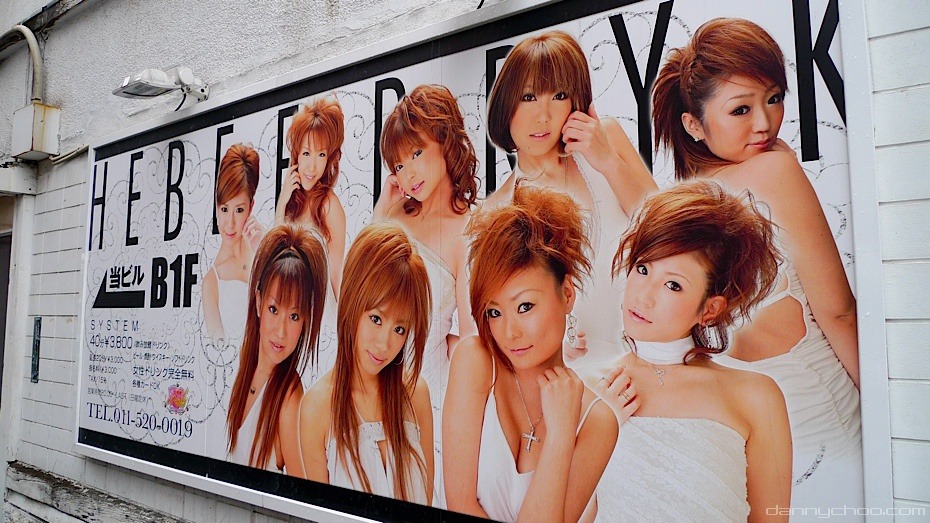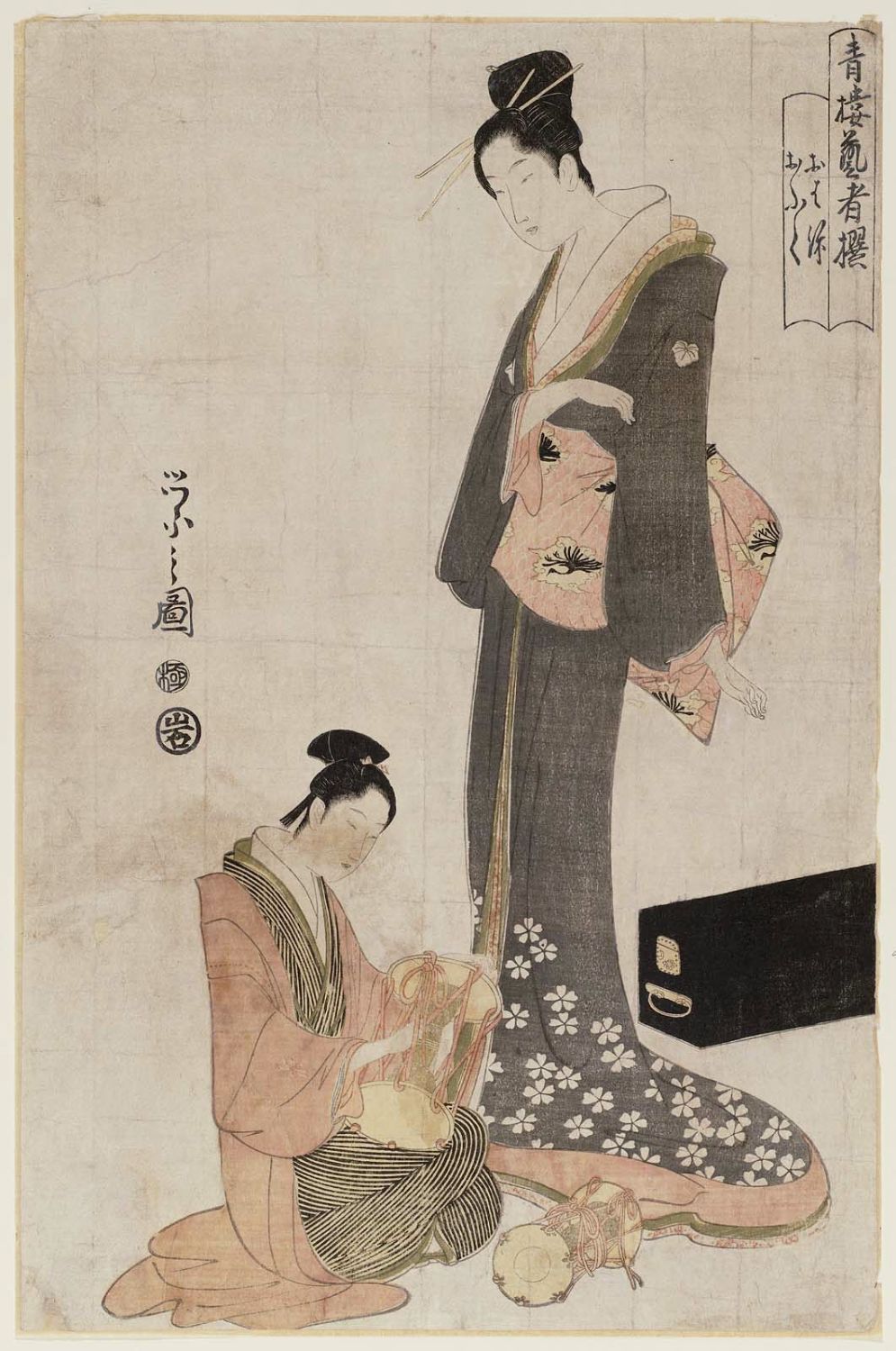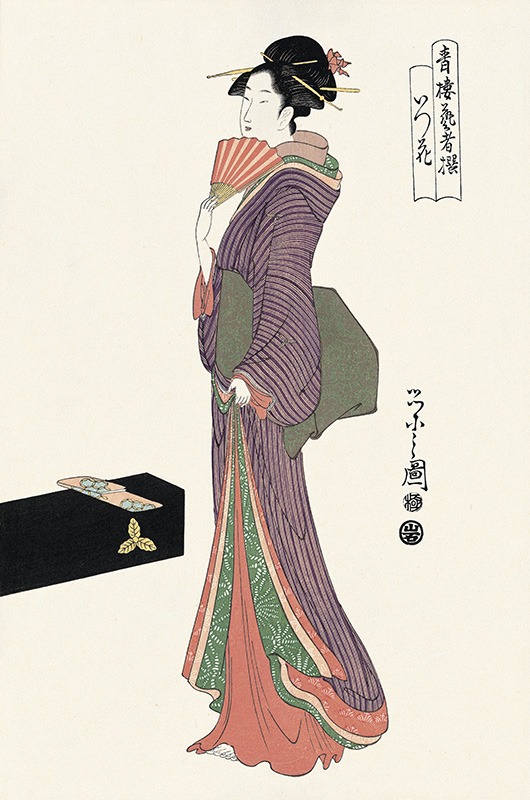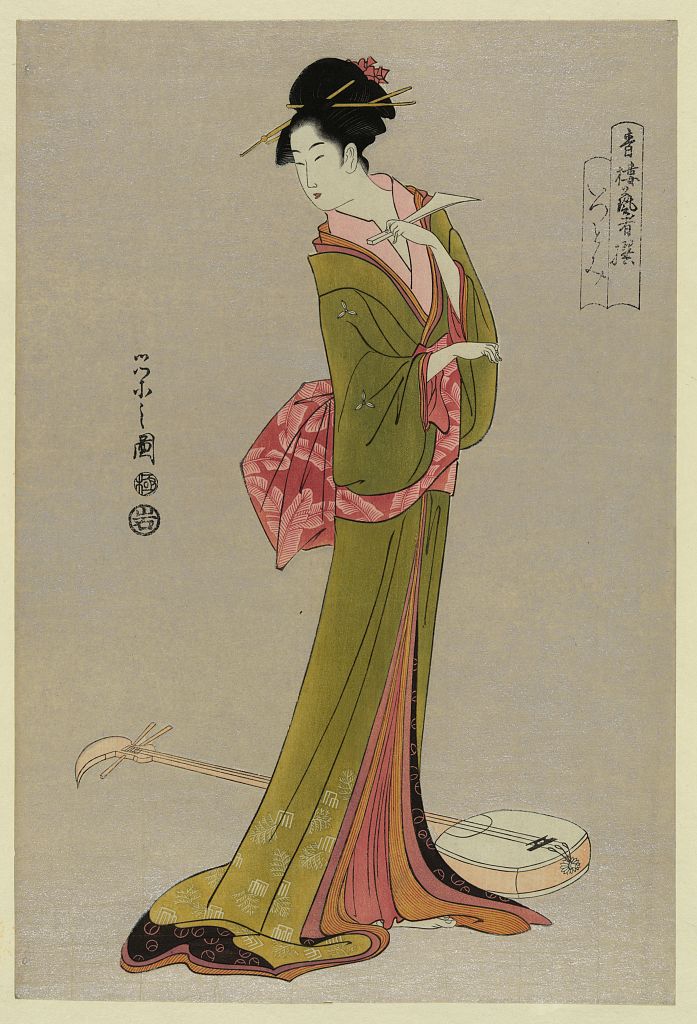Inside Japan’s Hostess Clubs

By Ryodai Matsui
Contributor
30/4/2022

Poster advertising a hostess club in Japan (Picture Credit: Danny Choo)
Noa was a rebellious teenager. She grew up in a well-to-do family, often travelled first-class on vacations, and took classical ballet. After a leg injury ended her dreams of becoming a ballerina, however, Noa fell into truancy with some of her friends. Hoping to reform her, her parents enrolled her in a three-year study-abroad program in Dunedin, New Zealand, and upon her return, had her enroll in college, but Noa soon dropped out and became a hostess.
Now, at the age of 27, Noa owns the high-end hostess club Reims in the classy nightlife district of Kitashinchi, Osaka, and runs her own YouTube channel, Shingeki no Noa. With over 500,000 subscribers, the channel shows Noa’s lavish lifestyle, her motherliness toward the hostesses she employs at Reims, and the inner-workings of her establishment.
Noa, in an Instagram photo
Hostess clubs, establishments where men pay to talk and drink with beautiful and charming women, can be found in nightlife districts all over Japan, and are a popular choice for many Japanese men on a night out. Hostess clubs largely fall into two categories: kyabakuras and kurabus. In a kurabu, a patron chooses or is assigned a hostess to entertain him from his first visit there, and sticks with her in perpetuity – he will not be able to choose any other hostess at that club. (Returning patrons of kurabus usually call ahead to reserve their time with their designated hostess.) By contrast, a patron of a kyabakura does not need to commit to a single hostess, and different hostesses are brought to his table on rotation – though, if he takes a liking to one of them, he can request she remain with him for the rest of the night.
The exclusivity of kurabus are leavened somewhat by the fact that they allow for multiple hostesses to join the patron and his nominated hostess at their table. By contrast, at kyabakuras, hostesses interact one-on-one with their patrons. Whichever type of hostess club you visit, though, it’s likely to be pricey, with men typically spending hundreds, if not thousands, of dollars there in a single night.
Hostess clubs are pricey, with men typically spending hundreds, if not thousands, of dollars there in a single night.
The appeal of these hostess clubs is obvious. “The main reason is that they find it fun and exciting to flirt with the hostesses,” said Yuki, a friend of mine who used to be a hostess at a kyabakura, and is now a hostess at a kurabu. This is especially the case in Japan, where men are usually overworked, leaving them with few opportunities to organically meet women. Japanese people also tend to be quite reserved, and are less willing to spark spontaneous conversations. Because of this, visiting hostess clubs in Japan is both quite common and socially-acceptable. Yuki said that some patrons are also people who work at nearby restaurants and clubs that the hostesses patronize (in Japan it’s common for people to reciprocally patronize each other’s businesses).
What’s it like inside these clubs? Once, whilst bar-hopping in Gion, Kyoto — Japan’s most famous geisha district – my cousin and I were enticed into a kyabakura by a tout. Led into the main room, which was neatly divided into two rows of cubicles, we were promptly seated on a sofa. Less than a minute later, two hostesses, both wearing sparkling bodycon dresses, politely greeted us and took their seats — one in between me and my cousin, the other to my right. At once, one of them playfully urged us to order an expensive bottle of champagne because she “wanted to try it.” My cousin, having been to several hostess clubs, was familiar with these ploys to get patrons to spend as much money in as short an amount of time as possible, and declined, ordering a bottle of Martell Cordon Bleu Cognac instead.
“Is this your first time?” the hostess to my right asked me.
I told her, yes.
“Well then, I’ll do my best so that you’ll want to come back,” she replied.
We drank to that, and she began complimenting me on my English (I had been speaking to my cousin in English). When I told her I had lived in Guam, she exclaimed, “Sugoi!” meaning “Wow!”
We spoke for about 30 minutes before two other hostesses arrived and took their place. “Is this your first time?” the new hostess to my right asked me.
“Yes.”
“Well then, I’ll do my best so that you’ll want to come back.”
We clinked glasses, sipped our drinks, and she began complimenting my English fluency. “I heard you speaking English from the other table. Sugoi!”
Not wanting to have to repeat myself about living on Guam, I quickly changed the topic. We spoke for about 30 minutes before the last set of hostesses arrived. I went through the same drill with the girl to my right, whose name was Sayaka. It turned out that, like me, she was a 21-year-old college student.
“I study literature,” she said. “What about you?”
I replied that I was studying international relations at a university in Tokyo.
“Sugoi!” Sayaka replied, while hinting that our bottle of cognac was almost gone. Already hammered, we decided that to call it a night. After paying, we were escorted out by Sayaka and the other hostesses.
Our bill came up to $500 — $150 per person, and $200 for the bottle. Whilst I knew it was going to be expensive, I didn’t realize just how quickly our bottle would run out; I thought we’d drink half at most and keep the bottle there for another night. But the constant rotation of girls made short work of it.

Yamamoto, a family friend and a patron of high-end kurabus in Kitashinchi, said he prefers kurabus to kyabakura. “It’s far more relaxing and classier,” he explained.
It’s true. I’ve followed Yamamoto on several occasions as he made his monthly rounds to his favorite kurabus. The dim lighting and opulent decor of the kurabus we visited put me at ease. But more than that, the hostesses at kurabus seemed more elegant and professional than those at kyabakuras. This was probably because hostesses at kurabus tend to be older and more experienced. Or maybe it was just because it’s easier to engage in deeper conversations with hostesses at kurabus, since your designated hostess remains at your table for the entirety of your visit.
The hostesses at kurabus come closer to that famous Japanese icon: the geisha. Trained in the arts of conversation, dance, singing, and the shamisen (a three-stringed guitar-like instrument), geishas were highly sought-after as companions by Japanese gentlemen. This, of course, belied a tough reality: girls who became geishas were sold by their families to teahouses and were expected to perform chores there in exchange for training, and, after coming of age, could be made to sleep with clients in exchange for money. Once numerous, geishas are now few in numbers, the profession only surviving due to its cultural importance.



18th-century prints of geishas by Eishi
Like their geisha ancestors, some hostesses do end up sleeping with their patrons. Though these liaisons take place outside the hostess clubs, this has contributed to the impression of these clubs as places where women sell their bodies. And, in a way, they do. Every night, hostesses – college students, part-time office workers, mothers, and wives – put on tight dresses and high heels, and endure punishing nights of drinking with customers, followed by hangovers.

And quite often, their work bleeds into their free time. “I think that’s the hardest part about this job for me: constantly messaging or calling patrons, and going out for lunch and dinner on my days off,” Sayaka told me. “I have no personal time.”
Why, then, do women get into, and remain in, this industry? The most obvious answer is money. A top hostess can earn over $100,000 a month. Of course, hostesses of this caliber are far and few between, but, since hostesses get commissions on the drinks they manage to get patrons to buy, it’s possible for even a regular hostess to earn thousands of dollars in a single night. For a young woman fresh out of (or still in) school, there are few other starting jobs that can pay as well.
For a young woman fresh out of (or still in) school, there are few other starting jobs that can pay as well.
But, as with many other industries, it’s easy to get stuck working in this one. Enticed by the money, Yuki worked at a kyabakura throughout her time in college, before switching to a kurabu. Although she’s interested in changing professions, she hasn’t been able to do so because of a lack of experience.
“I’ve tried to get a normal desk job, but I just don’t make it past the interview stage,” she said. “So, I’ll probably just work as a hostess, moving from one kurabu to another.”
